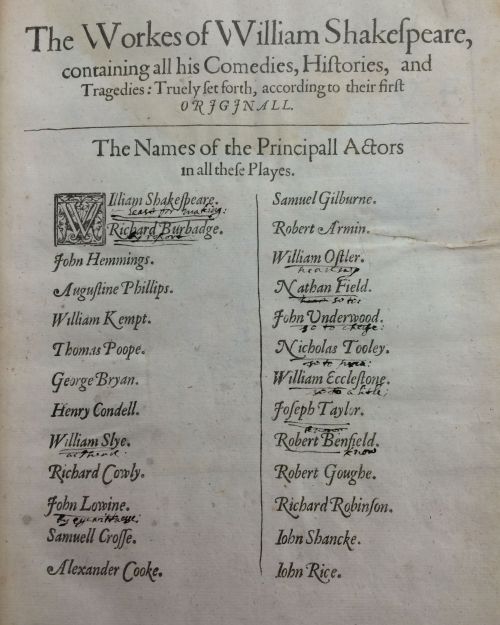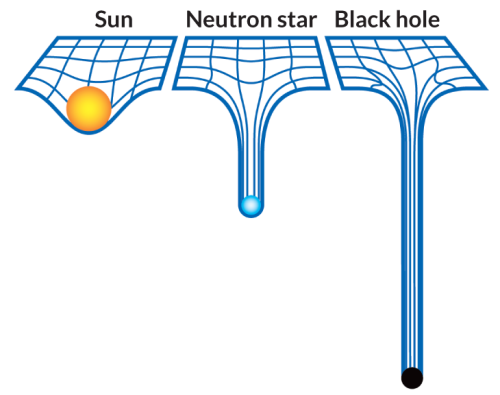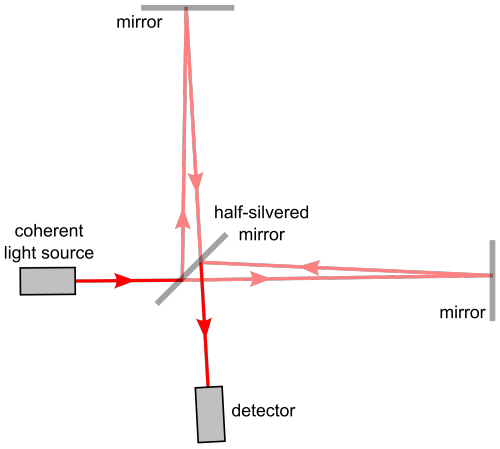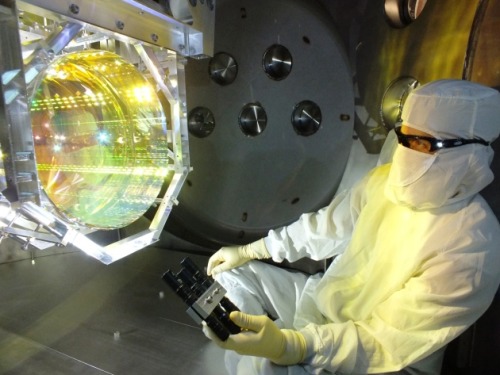Cadaver Study Casts Doubts On How Zapping Brain May Boost Mood, Relieve Pain

Look! A scientist who says more scrutiny is needed! Yea!
AND - “Don’t try this at home!”
Cadaver study casts doubts on how zapping brain may boost mood, relieve pain
Earlier this month, György Buzsáki of New York University (NYU) in New York City showed a slide that sent a murmur through an audience in the Grand Ballroom of New York’s Midtown Hilton during the annual meeting of the Cognitive Neuroscience Society. It wasn’t just the grisly image of a human cadaver with more than 200 electrodes inserted into its brain that set people whispering; it was what those electrodes detected—or rather, what they failed to detect.
When Buzsáki and his colleague, Antal Berényi, of the University of Szeged in Hungary, mimicked an increasingly popular form of brain stimulation by applying alternating electrical current to the outside of the cadaver’s skull, the electrodes inside registered little. Hardly any current entered the brain. On closer study, the pair discovered that up to 90% of the current had been redirected by the skin covering the skull, which acted as a “shunt,” Buzsáki said.
The new, unpublished cadaver data make dramatic effects on neurons unlikely, Buzsáki says. Most tDCS and tACS devices deliver about 1 to 2 milliamps of current. Yet based on measurements from electrodes inside multiple cadavers, Buzsaki calculated that at least 4 milliamps—roughly equivalent to the discharge of a stun gun—would be necessary to stimulate the firing of living neurons inside the skull. Buzsáki notes he got dizzy when he tried 5 milliamps on his own scalp. “It was alarming,” he says, warning people not to try such intense stimulation at home.
Buzsáki expects a living person’s skin would shunt even more current away from the brain because it is better hydrated than a cadaver’s scalp. He agrees, however, that low levels of stimulation may have subtle effects on the brain that fall short of triggering neurons to fire. Electrical stimulation might also affect glia, brain cells that provide neurons with nutrients, oxygen, and protection from pathogens, and also can influence the brain’s electrical activity. “Further questions should be asked” about whether 1- to 2-milliamp currents affect those cells, he says.
Buzsáki, who still hopes to use such techniques to enhance memory, is more restrained than some critics. The tDCS field is “a sea of bullshit and bad science—and I say that as someone who has contributed some of the papers that have put gas in the tDCS tank,” says neuroscientist Vincent Walsh of University College London. “It really needs to be put under scrutiny like this.”
More Posts from Philosophical-amoeba and Others
Neutrinos Hint of Matter-Antimatter Rift

the same underground observatory in Japan where, 18 years ago, neutrinos were first seen oscillating from one “flavor” to another — a landmark discovery that earned two physicists the 2015 Nobel Prize — a tiny anomaly has begun to surface in the neutrinos’ oscillations that could herald an answer to one of the biggest mysteries in physics: why matter dominates over antimatter in the universe.
The anomaly, detected by the T2K experiment, is not yet pronounced enough to be sure of, but it and the findings of two related experiments “are all pointing in the same direction,” said Hirohisa Tanaka of the University of Toronto, a member of the T2K team who presented the result to a packed audience in London earlier this month.
“A full proof will take more time,” said Werner Rodejohann, a neutrino specialist at the Max Planck Institute for Nuclear Physics in Heidelberg who was not involved in the experiments, “but my and many others’ feeling is that there is something real here.”
The long-standing puzzle to be solved is why we and everything we see is matter-made. More to the point, why does anything — matter or antimatter — exist at all? The reigning laws of particle physics, known as the Standard Model, treat matter and antimatter nearly equivalently, respecting (with one known exception) so-called charge-parity, or “CP,” symmetry: For every particle decay that produces, say, a negatively charged electron, the mirror-image decay yielding a positively charged antielectron occurs at the same rate. But this cannot be the whole story. If equal amounts of matter and antimatter were produced during the Big Bang, equal amounts should have existed shortly thereafter. And since matter and antimatter annihilate upon contact, such a situation would have led to the wholesale destruction of both, resulting in an empty cosmos.
Somehow, significantly more matter than antimatter must have been created, such that a matter surplus survived the annihilation and now holds sway. The question is, what CP-violating process beyond the Standard Model favored the production of matter over antimatter?
Many physicists suspect that the answer lies with neutrinos — ultra-elusive, omnipresent particles that pass unfelt through your body by the trillions each second.
To that end, starting in 2010, scientists with the T2K experiment generated beams of neutrinos or antineutrinos in Tokai, Japan, and aimed them toward the Super-Kamiokande neutrino observatory, a sensor-lined tank of 50,000 tons of pure water located nearly 200 miles away in Kamioka. Occasionally, these ghostly particles interacted with atoms inside the water tank, generating detectable flashes of radiation. Detecting a difference in the behavior of the neutrinos and antineutrinos would provide an important clue about the preponderance of matter over antimatter, perhaps opening up a route beyond the Standard Model to a more complete theory of nature. Already, the strange properties of neutrinos provide a possible outline of that fuller story.

Kamioka Observatory, ICRR (Institute for Cosmic Ray Research), The University of Tokyo At the Super-Kamiokande observatory in Kamioka, Japan — shown here when it was being filled with water in 2006 — neutrinos interact with atoms inside the water, generating flashes of radiation that are picked up by the surrounding sensors.
Primordial Neutrinos
The 1998 discovery that neutrinos switch flavors on the fly “may change our most fundamental theories,” President Bill Clinton said at the time, “from the nature of the smallest subatomic particles to how the universe itself works.”
Neutrino oscillations defied the Standard Model’s prediction that the particles are massless, like photons. In order for neutrinos to oscillate, each of their three possible flavors (electron, muon and tau) must be a quantum-mechanical mixture, or “superposition,” of three possible masses. Quantum superpositions evolve over time. So a neutrino might start out with its three mass components giving it pure muon flavor, but as the components evolve at different rates, electron flavor gradually enters the mixture, and the neutrino will have some probability of being measured as an electron neutrino.
There’s no mechanism within the Standard Model by which neutrinos might acquire their tiny, nonzero masses. Also unknown is why all neutrinos are observed to be “left-handed,” spinning clockwise with respect to their direction of motion, while all antineutrinos are right-handed, spinning counterclockwise.
Experts overwhelmingly favor a double-duty explanation of neutrino mass and single-handedness called the “seesaw mechanism,” whereby the known, lightweight, left-handed neutrinos have much heavier right-handed counterparts, and the known antineutrinos likewise have superheavy left-handed counterparts (the light and heavy masses are inversely related, like two sides of a seesaw). For this seesaw explanation to work, the neutrinos and antineutrinos on each side of the seesaw must actually be the same particle, except for their opposite handedness. Numerous experiments are now hunting for an extremely rare radioactive decay that would confirm this “Majorana” nature of neutrinos, thereby shoring up the logic of the seesaw mechanism.
If the theory is correct, then the heavy neutrinos and antineutrinos would have populated the hot young universe, when there was enough energy to beget beastly particles. They would have since decayed. Physicists wonder: Might their decays have produced the matter-antimatter asymmetry? This is the question to which an answer may be emerging — and much sooner than expected.
Tilted Seesaw
There’s good reason to think that neutrinos violate CP symmetry. The one established instance of CP violation in the laws of physics arises among the quarks — the building blocks of protons and neutrons — whose flavor mixing is described by a mathematical matrix similar to the one for neutrino mixing. In the quark case, though, the value of a numerical factor in the matrix that creates a disparity between quarks and antiquarks is very small. Quarks and antiquarks behave far too symmetrically to account for the universe’s matter-antimatter imbalance.

Lucy Reading-Ikkanda for Quanta Magazine
But the neutrino mixing matrix comes equipped with its own factor by which neutrinos and antineutrinos can violate CP symmetry. (Paradoxically, they can behave differently from one another even if they are Majorana particles, identical except for their opposite handedness.) If the lightweight neutrinos and antineutrinos violate CP symmetry, then the hypothetical heavy primordial neutrinos and antineutrinos must as well, and their asymmetric decays could easily have produced the universe’s glut of matter. Discovering CP violation among the lightweight neutrinos “will boost that general framework,” said Neal Weiner, a theoretical physicist at New York University.
The question is, how large will the CP-violation factor be? “The fear was that it would be small,” said Patricia Vahle, a physicist at the College of William & Mary — so small that the current generation of experiments wouldn’t detect any difference between neutrinos’ and antineutrinos’ behavior. “But it is starting to look like maybe we will be lucky,” she said.
To search for CP violation, the T2K scientists looked for evidence that neutrinos and antineutrinos oscillated between muon and electron flavors with unequal probabilities as they traveled between Tokai and Kamioka. The amount of CP violation once again works like a seesaw, with the rate of muon-to-electron neutrino conversions on one side, and corresponding antineutrino conversions on the other. The larger the value of the factor in the matrix, the greater the seesaw’s tilt.
If the seesaw is balanced, signifying perfect CP symmetry, then (accounting for differences in the production and detection rates of neutrinos and antineutrinos) the T2K scientists would have expected to detect roughly 23 electron neutrino candidates and seven electron antineutrino candidates in Kamioka, Tanaka said. Meanwhile, if CP symmetry is “maximally” violated — the seesaw tilted fully toward more neutrino oscillations and fewer antineutrino oscillations — then 27 electron neutrinos and six electron antineutrinos should have been detected. The actual numbers were even more skewed. “What we observed are 32 electron neutrino candidates and four electron antineutrino candidates,” Tanaka said.
With so few total events, it’s too soon to know whether the apparent tilt of the seesaw, signifying a large amount of CP violation, is real or a statistical aberration. Two other new hints of CP violation, however, strengthen the case. First, the newly running NOvA experiment, which generates a beam of muon neutrinos in Illinois and measures electron neutrinos in Minnesota, found a large number of these oscillations, again suggesting that the seesaw may be tilted in favor of neutrino oscillations and away from antineutrino oscillations. Second, researchers at the Super-Kamiokande observatory detected a similar enhancement of electron neutrinos coming from Earth’s atmosphere. (T2K and NOvA both plan to submit their findings for publication later this year.)
Vahle, who presented NOvA’s new results this month in London, urged caution; even when the T2K and NOvA results are combined, their statistical significance remains at a low level known as “2 sigma,” where there’s still a 5 percent chance the apparent deviation from CP symmetry is a random fluke. The results “do give me hope that finding CP violation in neutrino oscillations won’t be as hard as many feared it would be,” she said, “but we aren’t there yet.”
If CP violation among neutrinos is real and as large as it currently seems, then the evidence will slowly strengthen in the coming years. T2K’s signal could reach 3-sigma significance by the mid-2020s. “It’s a very exciting time as we look forward to a lot more data from both experiments,” said Peter Shanahan, a NOvA co-spokesperson.
It isn’t yet known exactly how CP violation in the light neutrino oscillations would translate into CP-violating decays of the heavy set. But discovering the former would point physicists in the latter’s general direction. “If we are starting to see [CP violation] in the neutrino sector, it is certainly a critical result,” Weiner said.
Story from Quanta Magazine
Visit Nanotechnology World Association for more articles









Happy almost birthday, Shakespeare! Or should I say Bard-thday? Recently, in honour of the 400th anniversary of William Shakespeare’s death (conveniently for celebratory purposes, he was born on April 23 1564 and died on the same day in 1616), I was given the incredible opportunity to have a private audience to go through the University of Glasgow’s copy of the First Folio, page by page. I’ve written a short article for the University Library’s blog, which you can find here, but I wanted to share some other images on my own blog that I didn’t have room for on the official post!
The University of Glasgow’s First Folio (more properly known as Mr. William Shakespeare’s Comedies, Histories, & Tragedies) is able to tell so many more stories than those of the plays contained in its pages- of the history of the antiquarian book trade, of the printing practices of the Renaissance, of book ownership and value. Rest assured, you’ll probably be seeing posts from me in the future about all of these things, as well as the typographical ornaments used in the book, which I found fascinating. The University’s Folio is particularly interesting due to the notations by past owners, including one who had apparently seen at least one of the original Chamberlain’s Men “By eyewittnesse”. But my favourite bit of the later additions is the morbid little poem on the reverse of one of the flyleaves: “Pitty it is the fam’d Shakespeare/ Shall ever want his chin or haire.”

We are not certain of the age of this display card. The half-pound packet of butter does not show the familiar 2 ounce division lines that were typical of the one pound packet around the 1950s. The card could be from as early as 1934 when one business advisor is quoted in the papers as suggesting that the Dairy Board should establish three large patting plants, say, in London, Manchester and Glasgow, where bulk New Zealand butter would be examined and then repacked in ¼ pound, ½ pound and 1 pound pats under the ‘Fernleaf’ brand, starting with 20,000 boxes a week, and gradually increasing this amount over several years.
Fernleaf New Zealand butter; a pure natural food. [Display card. 1950s?]
Eph-F-DAIRY-1950s-01
In general I am a casual observer and usually do not make comments, especially since I am here to learn and have no background in linguistics. But in this case I feel strongly compelled to put my 2 cents' worth of thoughts in.
Although I cannot say that I am anything like fluent, I do have a reasonable amount of Mandarin Chinese and Japanese, and I have to say the first thing I thought when I saw this article was "ah". Because although I can see how katakana is derived from Chinese, using the rather restricted stroke combinations that is the basis of all Chinese characters, the same cannot be said for hiragana, because at the very least, squiggles do not exist in Chinese, at least by the time it was exported to Japan. What you might think are squiggles in Chinese are in fact just our possibly lazy, or perhaps more elegant way of writing, the way cursive would look compared to printed letters. Hirangana bears only a superficial resemblance to Chinese and always feels like it must have another source of inspiration.
Also keep in mind that Chinese was basically an imported language into Japan, and an attempt to shoehorn Japanese sounds into Chinese characters (which I think I can safely say did not sound the same) must have been unwieldy at best. In fact, today, Japanese pronouciations of kanji differ so much from the Chinese, and often their usage too, that I would use my knowledge of the characters only as a rough starting point as to what they might mean in Japanese.
Also, I looked up Kūkai, and, to cut a long story short, he was a Japanese Buddhist monk who went to China to study the sutras, and, to quote from the Wikipedia page directly:
Kūkai arrived back in Japan in 806 as the eighth Patriarch of Esoteric Buddhism, having learnt Sanskrit and its Siddhaṃ script, studied Indian Buddhism, as well as having studied the arts of Chinese calligraphy and poetry, all with recognized masters. He also arrived with a large number of texts, many of which were new to Japan and were esoteric in character, as well as several texts on the Sanskrit language and the Siddhaṃ script.
And a quick look at the Siddham script shows that it has its roots in the Aramaic alphabet.
This is the man to whom the invention of the kana system is attributed to, and if that is the case, I see a possible connection that is as not as far-fetched as it seems.
The History of Hiragana
In Japanese language, we have three types of letters, Kanji, Hiragana, Katakana.
Hiragana’s root is from old Ivrit and Palmyra letters.

The first column: Phoenician alphabet The second column: Ostracon The third column: Old Aramaic The forth column: Imperial Aramaic The fifth column: Dead Sea scrolls The sixth column: Palmyrene script The seventh column: Palmyra

The first column: Hiragana The second column: Consonants The third column: Vowels The forth column: combined with the consonant and the vowel The fifth column: Sousho-tai (a hand writing style) The sixth column: Kanji

Black Holes are not so Black (Part 3) - Gravitational Waves
The existence of Gravitational Waves have been confirmed. But you probably have heard that. In this post, we will break down this profound discovery into comprehend-able chunks.
This is going to be a amazing journey. Ready ?
Redefining Gravity
When we usually talk of Gravitation we are bound to think like Newton, where objects are assumed to exerting a force upon each other.
Like imaginary arrows of force in space. But this picture, although good for high school crumbled, with the advent of Einstein’s theory of Relativity.

What is the Space-Time Fabric?
Think of space-time fabric as an actual cloth of fabric. ( An analogy )

When you place an object on the fabric, the cloth curves. This is exactly what happens in the solar system as well.

The sun with such a huge mass bends the space-time fabric. And the earth and all the planets are kept in orbit by following this curvature that has been made by the sun.
Attributing to the various masses of objects, the way they bend this fabric also varies.

What are Gravitational Waves?
If you drop an object in a medium such as water, they produce ripples that propagate as waves through the medium.

Similarly, Gravitational waves are ripples in space-time fabric produced when you drag heavy objects through space time.
And the nature of these waves is that they don’t require a medium to propagate.
How do you make one?
Everything with mass/energy can create these waves.

Source
Two persons dancing around each other in space too can create gravitational waves. But the waves would be extremely faint.
You need something big and massive accelerating through space-time in order to even detect them.

And orbiting binary stars/black holes are valuable in this retrospect.
How can you detect them?
Let’s turn to the problem to detecting them assuming you do find binary stars/black-holes in the wondrous space to suite your needs.
Well, for starters you cannot use rocks/ rulers to measure them because as the space expands and contracts, so do the rocks. ( the distances will remain same in both the cases )

Here’s where the high school fact that the speed of Light is a constant no matter what plays an important and pivotal role.
If the space expands, the time taken for light to reach from A to B would be longer. And if it contracts, the time taken for it to reach from A to B would be smaller.

PC: PHDComics
By allowing the light waves from the contraction and expansion to interfere with each other, such as done in any interferometry experiment we can detect the expansion or contraction. Voila!

And this is exactly what they did! ( on a macroscopic level ) at LIGO (Laser Interferometer Gravitational-Wave Observatory)
14 September 2015

Two Black Holes with masses of 29 and 36 solar masses merged together some 1.3 Billion light years away.
Two Black Holes colliding is the header animation of the ‘Black Holes are not so Black Series’, in case if you haven’t noticed.

The merger of these two black holes results in the emission of energy equivalent to 3 solar masses as Gravitational Waves.
This signal was seen by both LIGO detectors, in Livingston and Hanford, with a time difference of 7 milliseconds.
And with the measurement of this time difference, physicists have pronounced the existence of Gravitational Waves.

Source
All this is most certainly easily said than done and requires meticulous and extensive research, not to mention highly sensitive instruments.
Had they not have measured this time difference, we might have had to wait for the merger for more massive black holes to collide and maybe even build more sensitive instruments to detect these waves.
And Einstein predicted this a 100 years back!

Mind Blown!
Note: Hope you are able to understand and appreciate the profundity of the discovery done by mankind.
** All animations used here are merely for Educational purposes. If you have any issues, please write to us at : 153armstrong@gmail.com
Toward an Irish Republic

Ireland lived under England’s rule for almost four centuries. The Irish fought against this occupation through the press, through literature, in politics, and in the streets. They could not, however, create a united front of protesters because they were divided among themselves and struggled with their national identity.
Toward an Irish Republic focuses on the political progress made between the fifteenth and twentieth centuries, as well as the Irish literary revival that occurred at the turn of the nineteenth century.
Driven by Ireland’s desire to build a separate identity from Britain, a distinct Irish literature began to emerge. The establishment of modern Irish literature contributed to the unification of the Irish. They explored their Gaelic roots, searching for stories of characters with the tenacity for which the Irish are now famous. Many Irish men and women also taught themselves the Gaelic language and read folklore. For example, Lady Sydney Morgan, in her novel The Wild Irish Girl (1806), wrote of a young Englishman who travels through Ireland and discovers its history and culture. Standish O’Grady retold Gaelic folktales and historical stories, such as “Birth of King Cormac” and “Teigue Mac Cein’s Adventure”, in his book Silva Gadelica (1892).
One of the greatest points of contention between the Irish and English was their denominational divide. The majority of people in Ireland identified themselves as Catholic, whereas the majority of the people in England were Protestants. The English, strongly opposed to Catholicism since Henry VIII broke away from the Roman Catholic Church, discouraged the Irish from practicing Catholicism. An early example of the political upheaval in Ireland is A Collection of Certain Horrid Murthers in the Several Counties of Ireland. Printed in 1679, this book lists Protestants that were killed during the Irish Rebellion of 1641 when Irish Catholics attempted to gain religious freedom.
Britain’s laws against Catholicism began to weaken by the end of the eighteenth century. In 1792, Theobald Wolfe Tone, one of the leaders of the United Irishmen, put forth his defense for Catholics to gain religious freedom in An Argument on Behalf of the Catholics of Ireland (1792). Many arguments for and against this issue were made, but it was not until 1829 that Catholics were emancipated, with the passage of the Roman Catholic Relief Act.
In 1921, a large portion of Ireland was able to gain independence. The Irish Free State, now known as the Republic of Ireland, was the result of these nationalist movements.
Bibliography
A Collection of Certain Horrid Murthers in the Several Counties of Ireland. London: Printed for Henry Brome, 1679. X 941.506 C685
Theobald Wolfe Tone. An argument on behalf of the Catholics of Ireland. Dublin: The United Irishmen, 1792. 320.9415 T61a5
Standish H. O’Grady. Silva Gadelica (I.-XXXI.): a Collection of Tales in Irish. London: Williams and Norgate, 1892. 891.6208 Og7s
Lady Sydney Morgan. The Wild Irish Girl. London: Printed for Richard Phillips, 1806. 823 M823W 1806

Sailor’s Eyeballs (Valonia ventricosa)
Known as bubble algae or sailor’s eyeballs, Valonia ventricosa are one of the world’s largest single-celled organisms. They’re found in almost every ocean in the world, mostly in tropical and sub-tropical regions among coral rubble.
These tough, shiny multi-nucleic cells, a kind of green algae, usually grow to be 0.4 to 1.5 inches in diameter but sometimes reach up to 2 inches across. By comparison, most human cells are so small they’re invisible to the naked eye; Valonia ventricosa are larger than your fingernail!
photograph by Alexander Vasenin | Wikipedia
via: American Museum of Natural History

Paralyzed ALS patient operates speech computer with her mind
In the UMC Utrecht a brain implant has been placed in a patient enabling her to operate a speech computer with her mind. The researchers and the patient worked intensively to get the settings right. She can now communicate at home with her family and caregivers via the implant. That a patient can use this technique at home is unique in the world. This research was published in the New England Journal of Medicine.
Because she suffers from ALS disease, the patient is no longer able to move and speak. Doctors placed electrodes in her brain, and the electrodes pick up brain activity. This enables her to wirelessly control a speech computer that she now uses at home.
Mouse click
The patient operates the speech computer by moving her fingers in her mind. This changes the brain signal under the electrodes. That change is converted into a mouse click. On a screen in front of her she can see the alphabet, plus some additional functions such as deleting a letter or word and selecting words based on the letters she has already spelled. The letters on the screen light up one by one. She selects a letter by influencing the mouse click at the right moment with her brain. That way she can compose words, letter by letter, which are then spoken by the speech computer. This technique is comparable to actuating a speech computer via a push-button (with a muscle that can still function, for example, in the neck or hand). So now, if a patient lacks muscle activity, a brain signal can be used instead.
Wireless
The patient underwent surgery during which electrodes were placed on her brain through tiny holes in her skull. A small transmitter was then placed in her body below her collarbone. This transmitter receives the signals from the electrodes via subcutaneous wires, amplifies them and transmits them wirelessly. The mouse click is calculated from these signals, actuating the speech computer. The patient is closely supervised. Shortly after the operation, she started on a journey of discovery together with the researchers to find the right settings for the device and the perfect way to get her brain activity under control. It started with a “simple” game to practice the art of clicking. Once she mastered clicking, she focused on the speech computer. She can now use the speech computer without the help of the research team.
The UMC Utrecht Brain Center has spent many years researching the possibility of controlling a computer by means of electrodes that capture brain activity. Working with a speech computer driven by brain signals measured with a bathing cap with electrodes has long been tested in various research laboratories. That a patient can use the technique at home, through invisible, implanted electrodes, is unique in the world.
If the implant proves to work well in three people, the researchers hope to launch a larger, international trial. Ramsey: “We hope that these results will stimulate research into more advanced implants, so that some day not only people with communication problems, but also people with paraplegia, for example, can be helped.”
-
 birdswithno reblogged this · 8 years ago
birdswithno reblogged this · 8 years ago -
 liluglygay liked this · 9 years ago
liluglygay liked this · 9 years ago -
 local--zero--ii liked this · 9 years ago
local--zero--ii liked this · 9 years ago -
 f0stercare reblogged this · 9 years ago
f0stercare reblogged this · 9 years ago -
 splasherxtrillic reblogged this · 9 years ago
splasherxtrillic reblogged this · 9 years ago -
 bassmaster55057-blog liked this · 9 years ago
bassmaster55057-blog liked this · 9 years ago -
 pygolampis liked this · 9 years ago
pygolampis liked this · 9 years ago -
 biodome420 liked this · 9 years ago
biodome420 liked this · 9 years ago -
 thegreyuniverse reblogged this · 9 years ago
thegreyuniverse reblogged this · 9 years ago -
 data-and-vision reblogged this · 9 years ago
data-and-vision reblogged this · 9 years ago -
 trainyourbrain reblogged this · 9 years ago
trainyourbrain reblogged this · 9 years ago -
 secretporcupine liked this · 9 years ago
secretporcupine liked this · 9 years ago -
 stairwell-flowers liked this · 9 years ago
stairwell-flowers liked this · 9 years ago -
 bloodgarnet liked this · 9 years ago
bloodgarnet liked this · 9 years ago -
 rai-kishi reblogged this · 9 years ago
rai-kishi reblogged this · 9 years ago -
 toonvailo reblogged this · 9 years ago
toonvailo reblogged this · 9 years ago -
 summonsloth reblogged this · 9 years ago
summonsloth reblogged this · 9 years ago -
 awkward-flaming-sword liked this · 9 years ago
awkward-flaming-sword liked this · 9 years ago -
 philosophical-amoeba reblogged this · 9 years ago
philosophical-amoeba reblogged this · 9 years ago -
 nurhhr reblogged this · 9 years ago
nurhhr reblogged this · 9 years ago -
 thejewishjedi liked this · 9 years ago
thejewishjedi liked this · 9 years ago -
 booksmakeme reblogged this · 9 years ago
booksmakeme reblogged this · 9 years ago -
 divagoddess liked this · 9 years ago
divagoddess liked this · 9 years ago -
 tombtombtombtombtomb reblogged this · 9 years ago
tombtombtombtombtomb reblogged this · 9 years ago -
 racegotime-blog liked this · 9 years ago
racegotime-blog liked this · 9 years ago -
 westernamericana liked this · 9 years ago
westernamericana liked this · 9 years ago -
 bambooni reblogged this · 9 years ago
bambooni reblogged this · 9 years ago -
 usainboltzmann-blog reblogged this · 9 years ago
usainboltzmann-blog reblogged this · 9 years ago -
 technicalzombie reblogged this · 9 years ago
technicalzombie reblogged this · 9 years ago -
 technicalzombie liked this · 9 years ago
technicalzombie liked this · 9 years ago -
 nonphallic-eclairs reblogged this · 9 years ago
nonphallic-eclairs reblogged this · 9 years ago -
 heacher reblogged this · 9 years ago
heacher reblogged this · 9 years ago -
 heacher liked this · 9 years ago
heacher liked this · 9 years ago -
 singularflower-blog liked this · 9 years ago
singularflower-blog liked this · 9 years ago -
 biopiro liked this · 9 years ago
biopiro liked this · 9 years ago -
 recipeforromping reblogged this · 9 years ago
recipeforromping reblogged this · 9 years ago
A reblog of nerdy and quirky stuff that pique my interest.
291 posts
